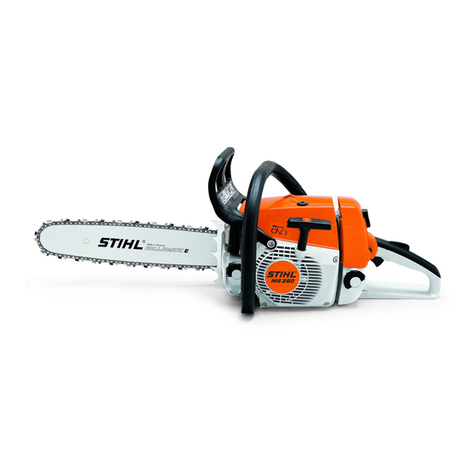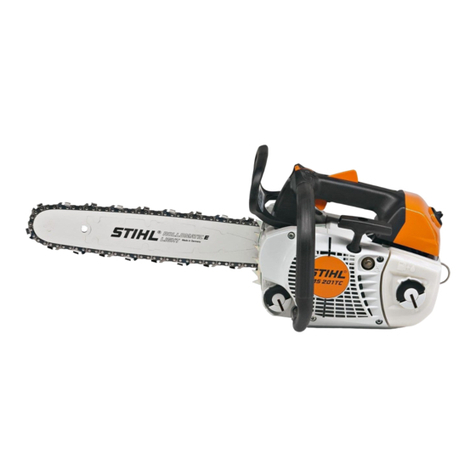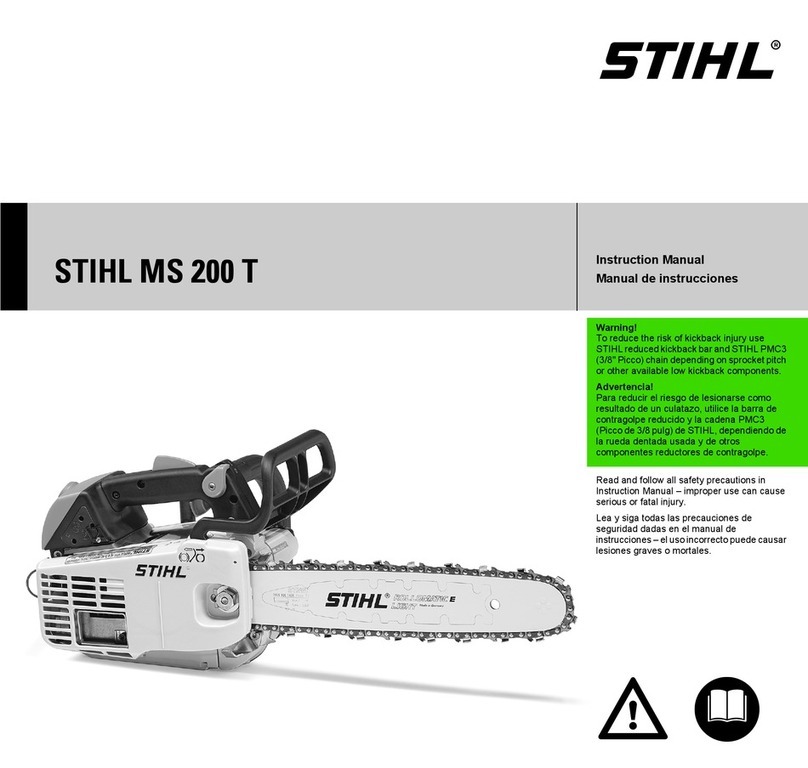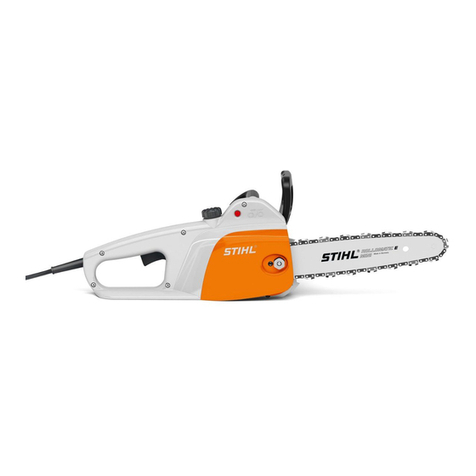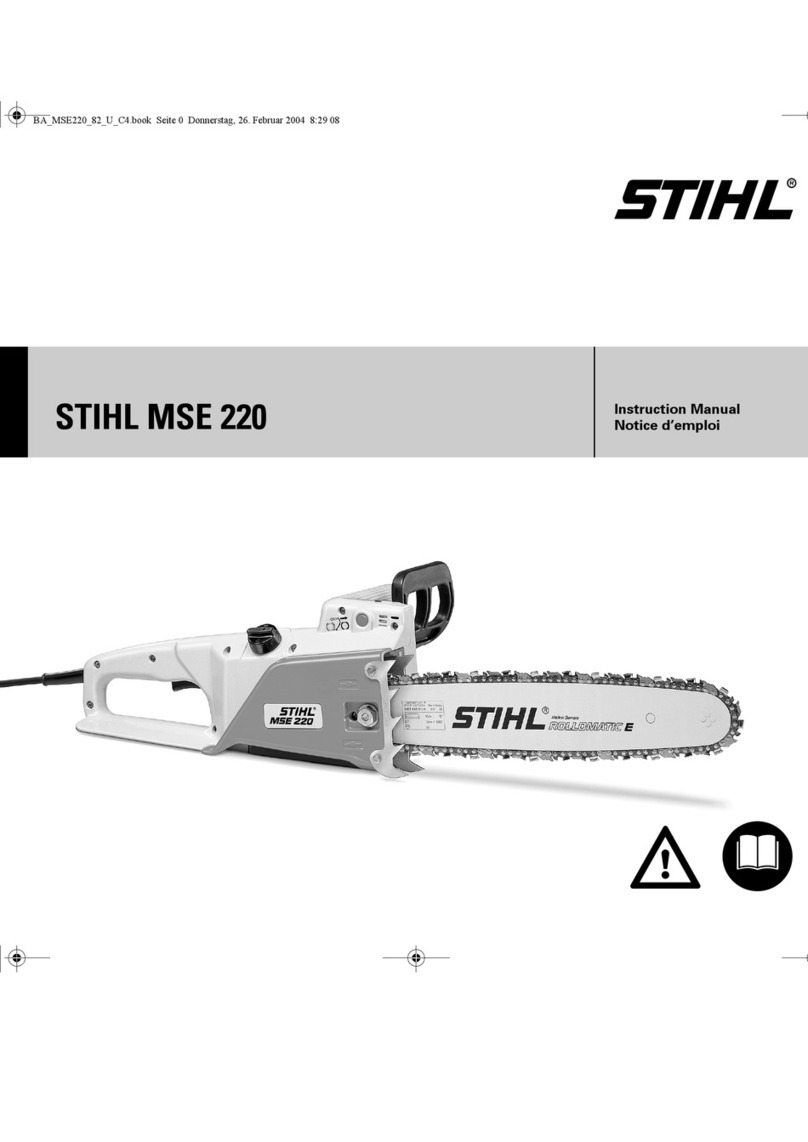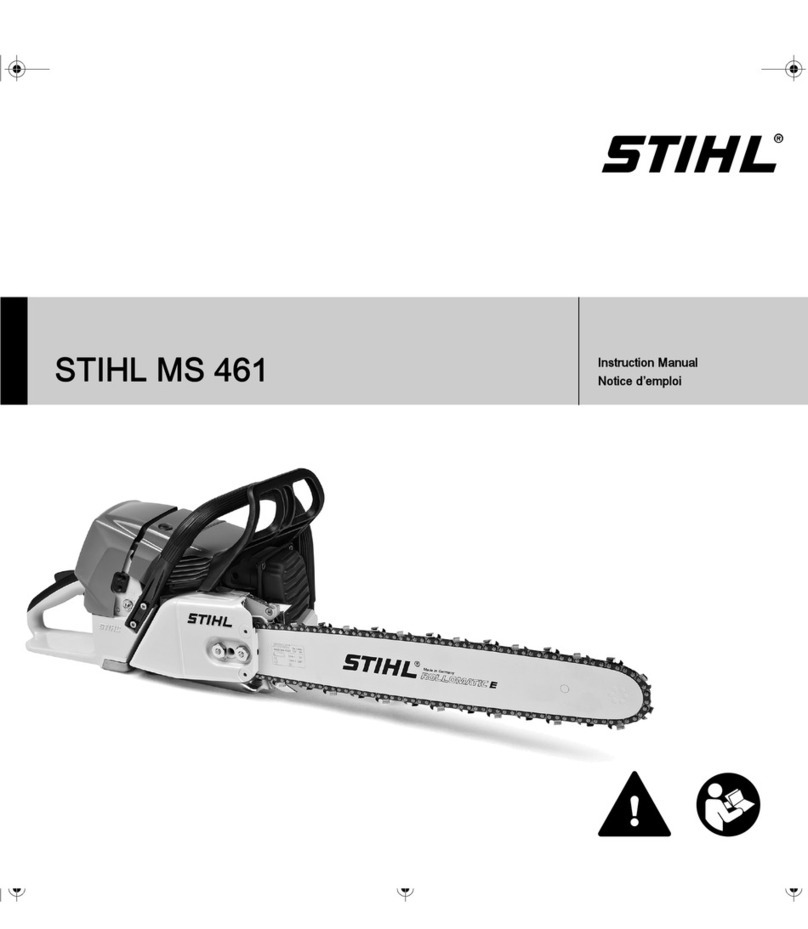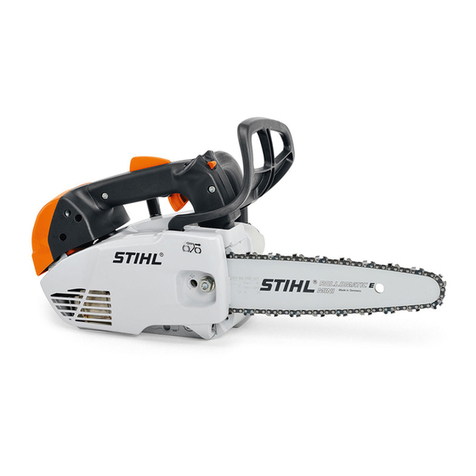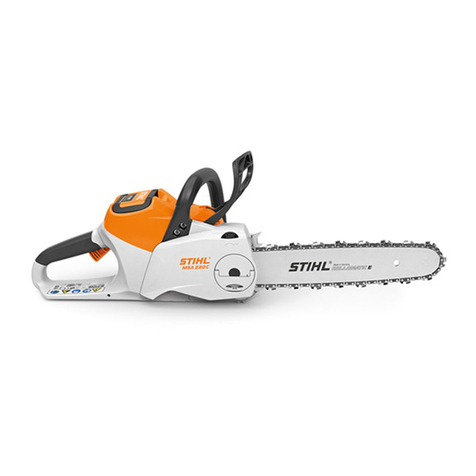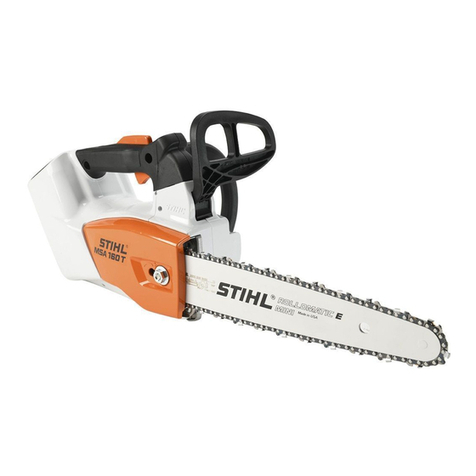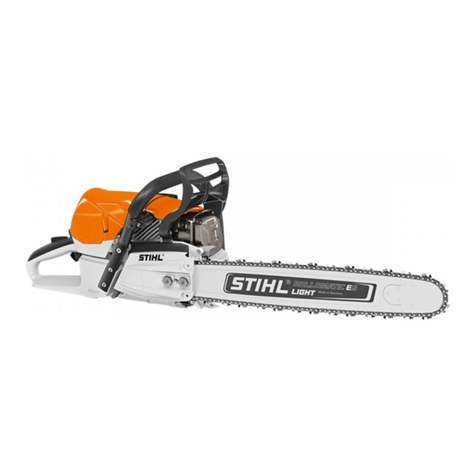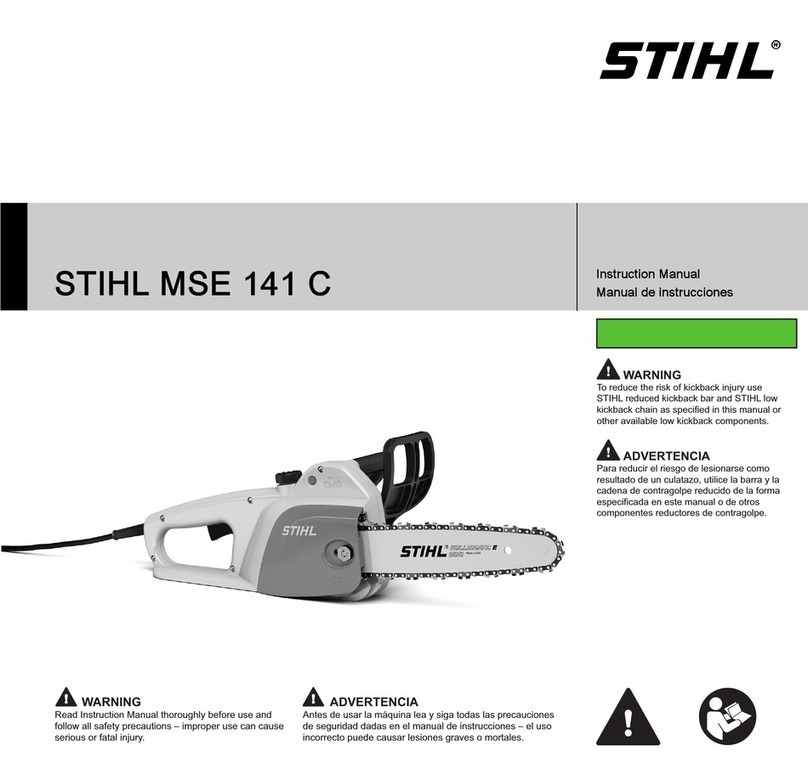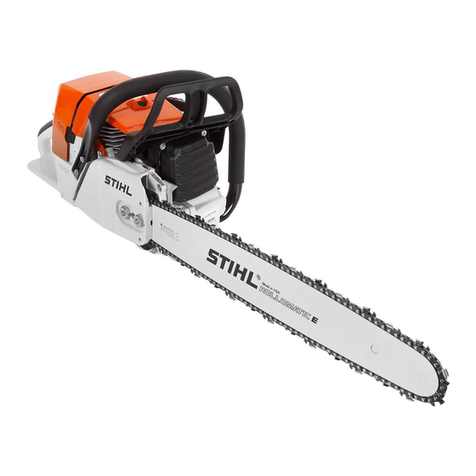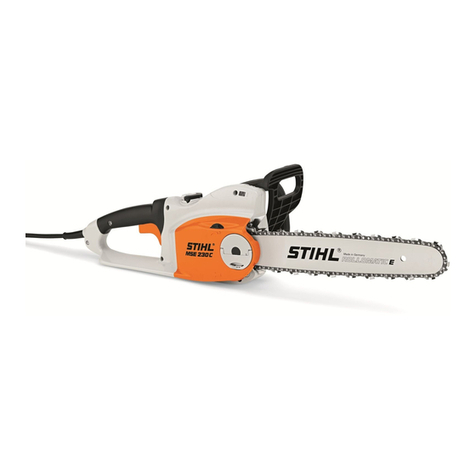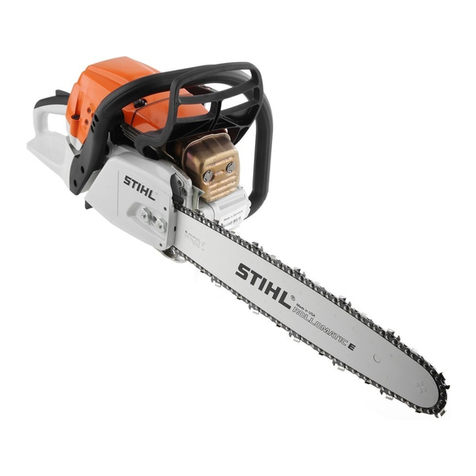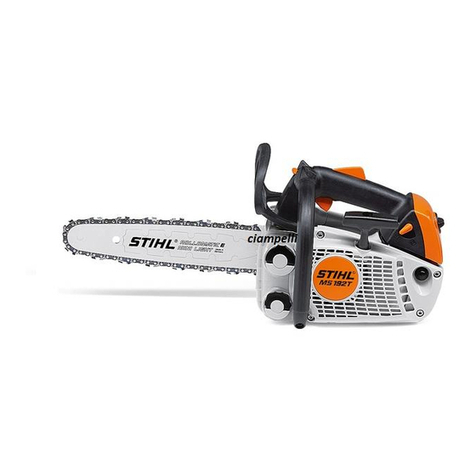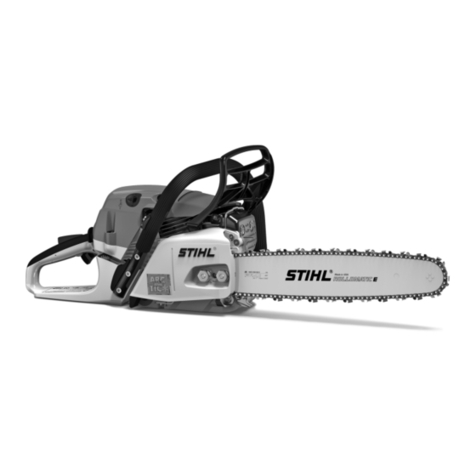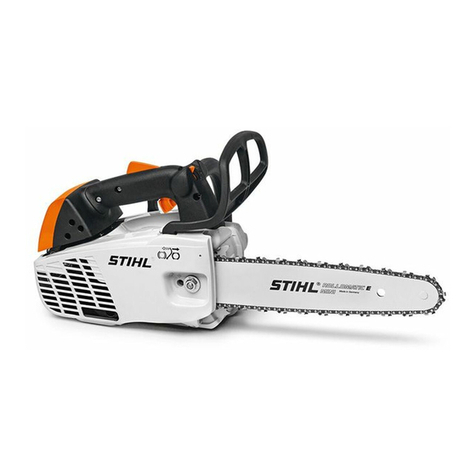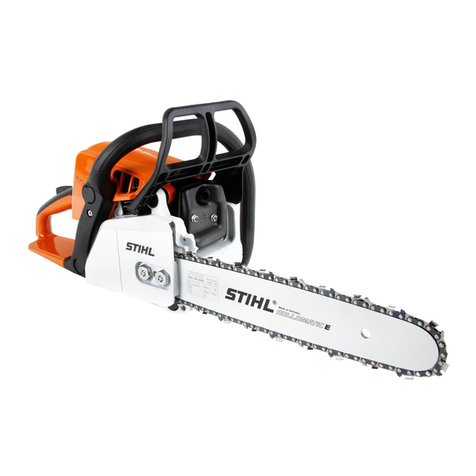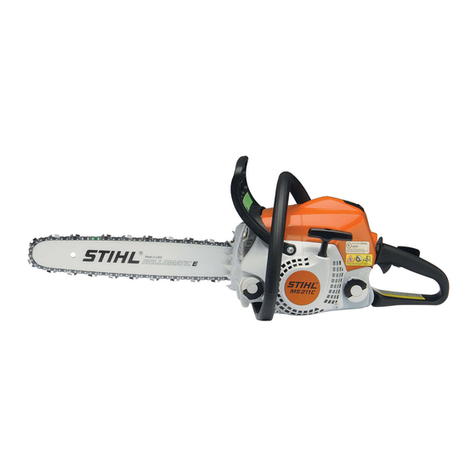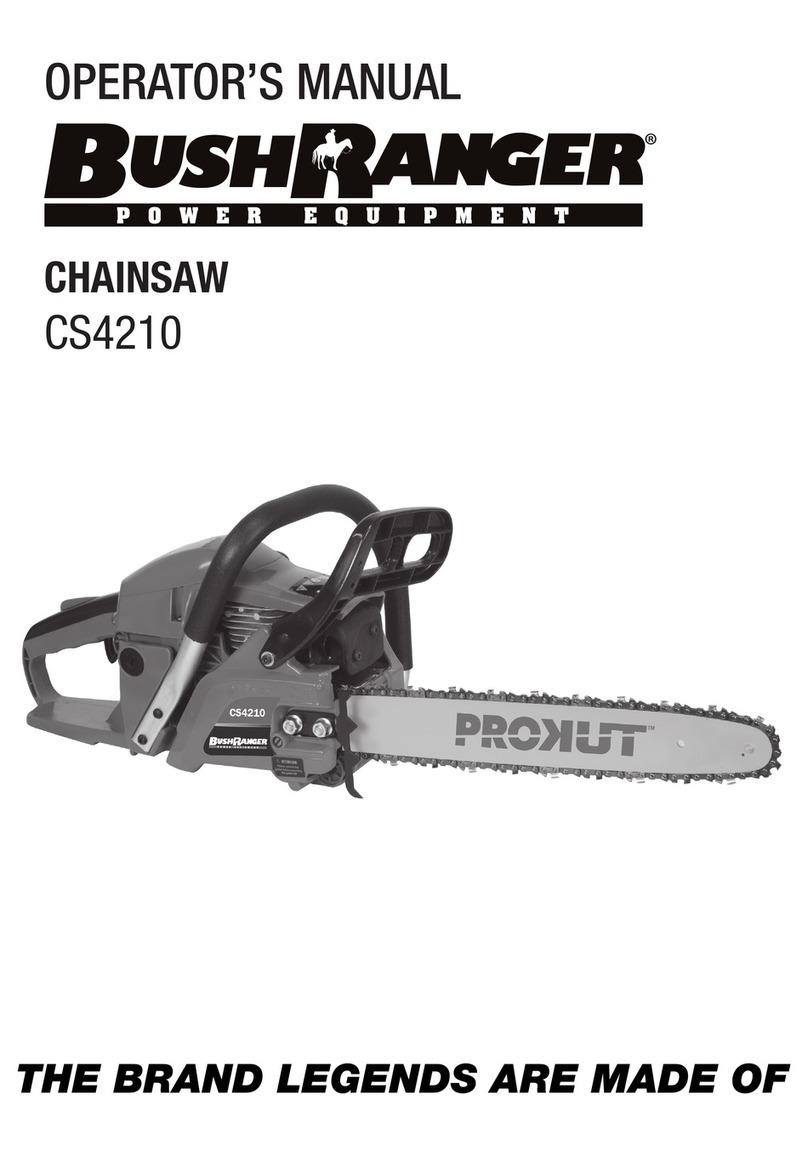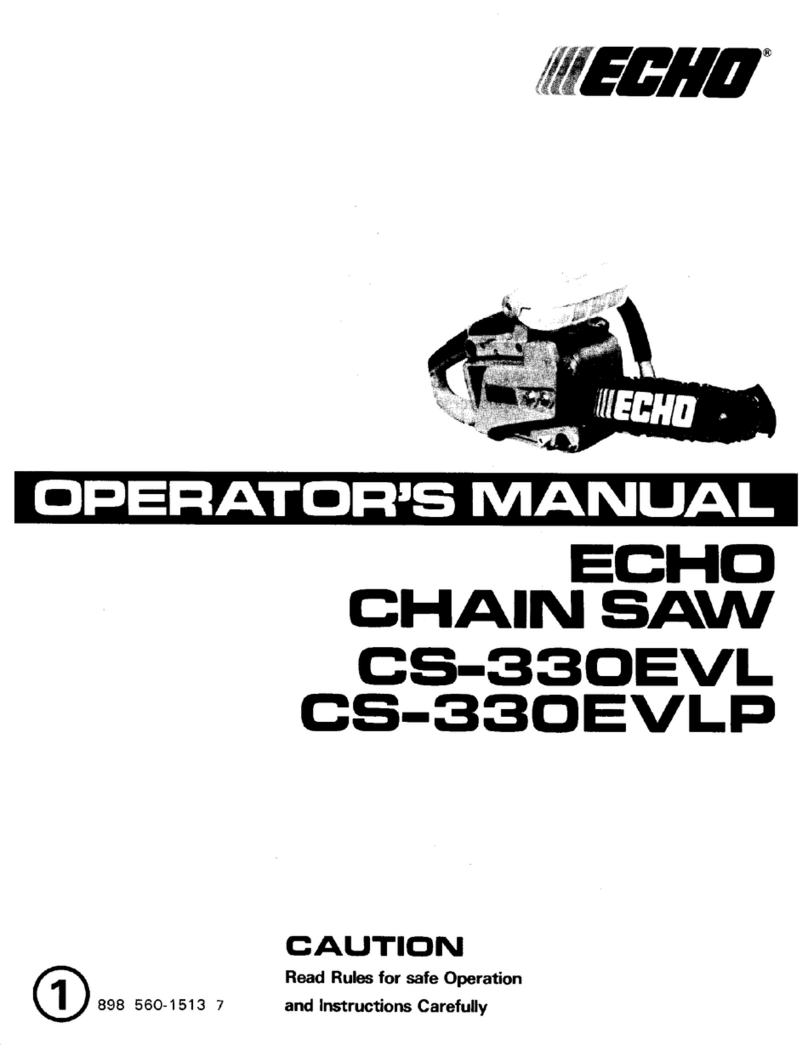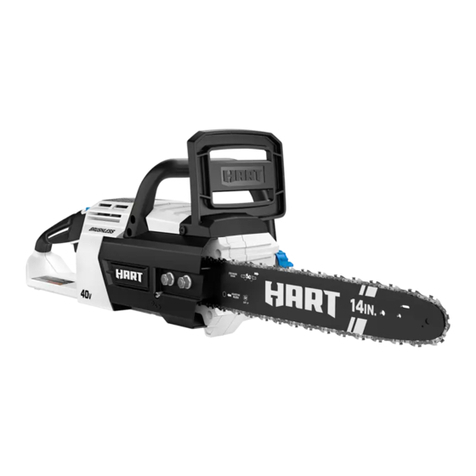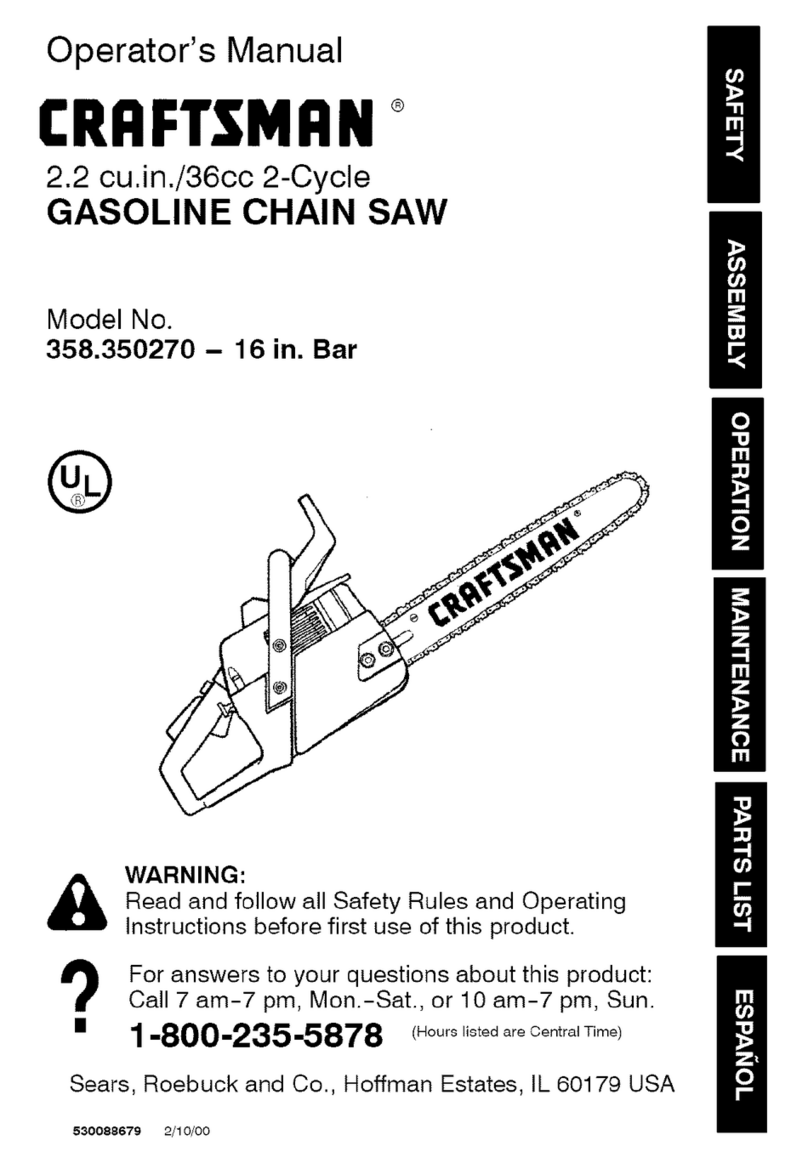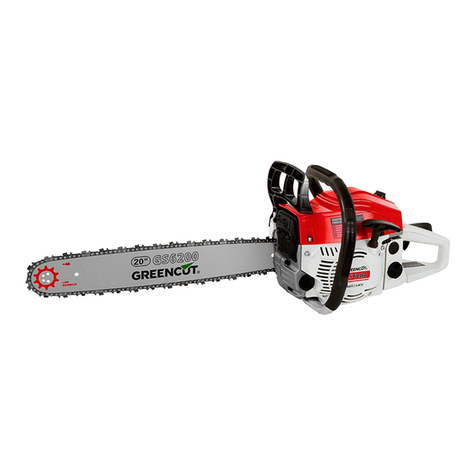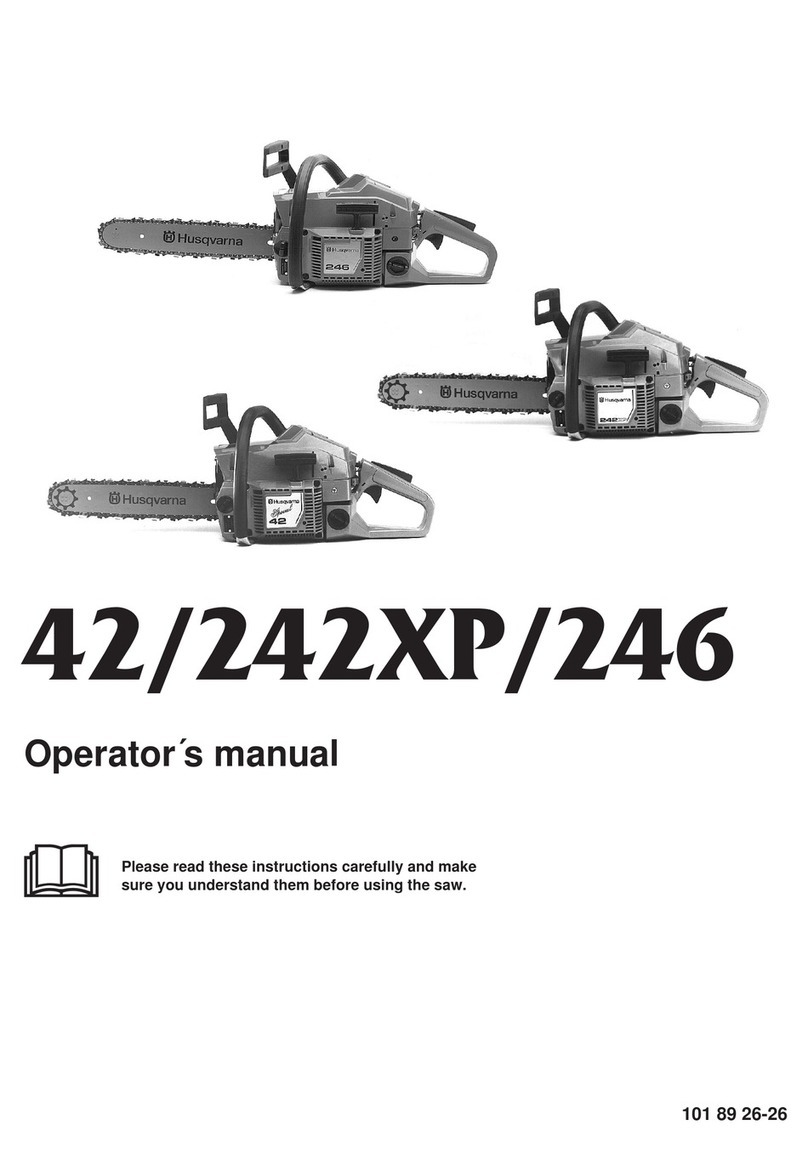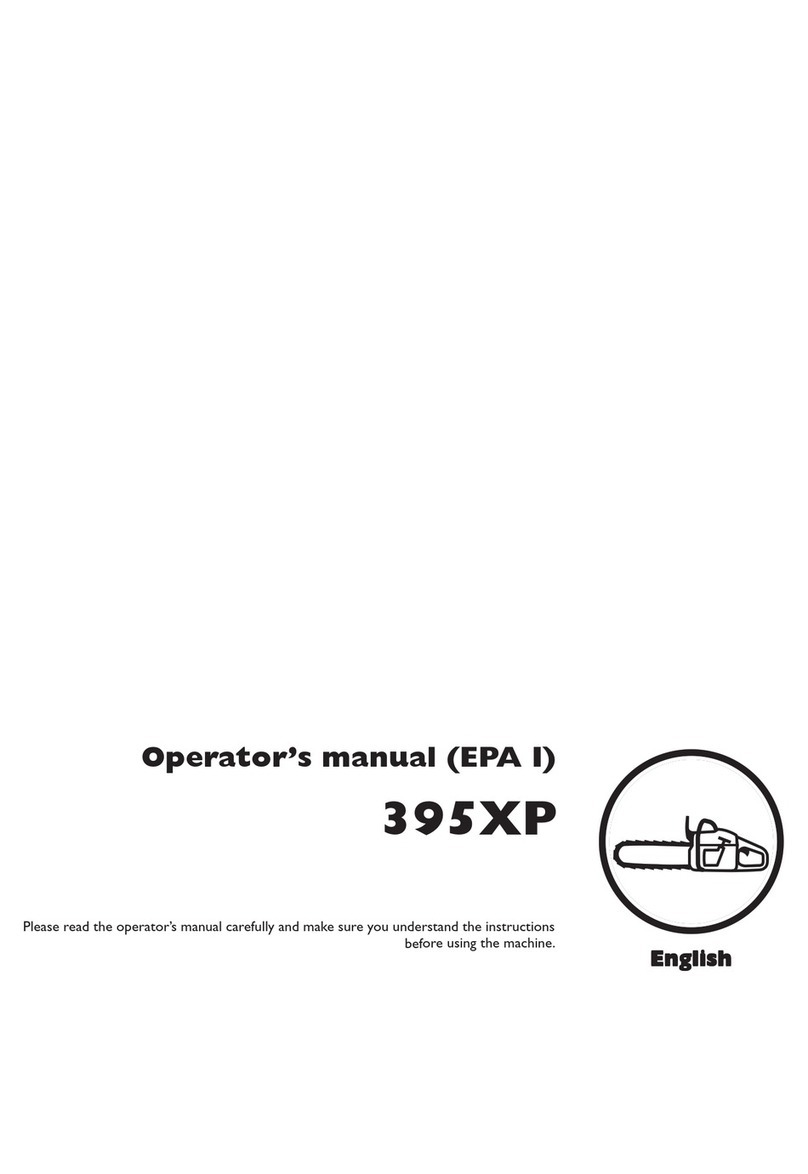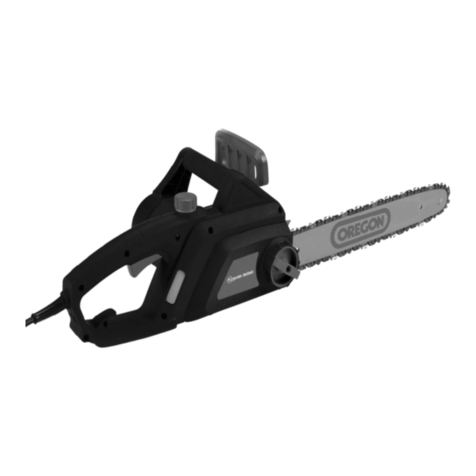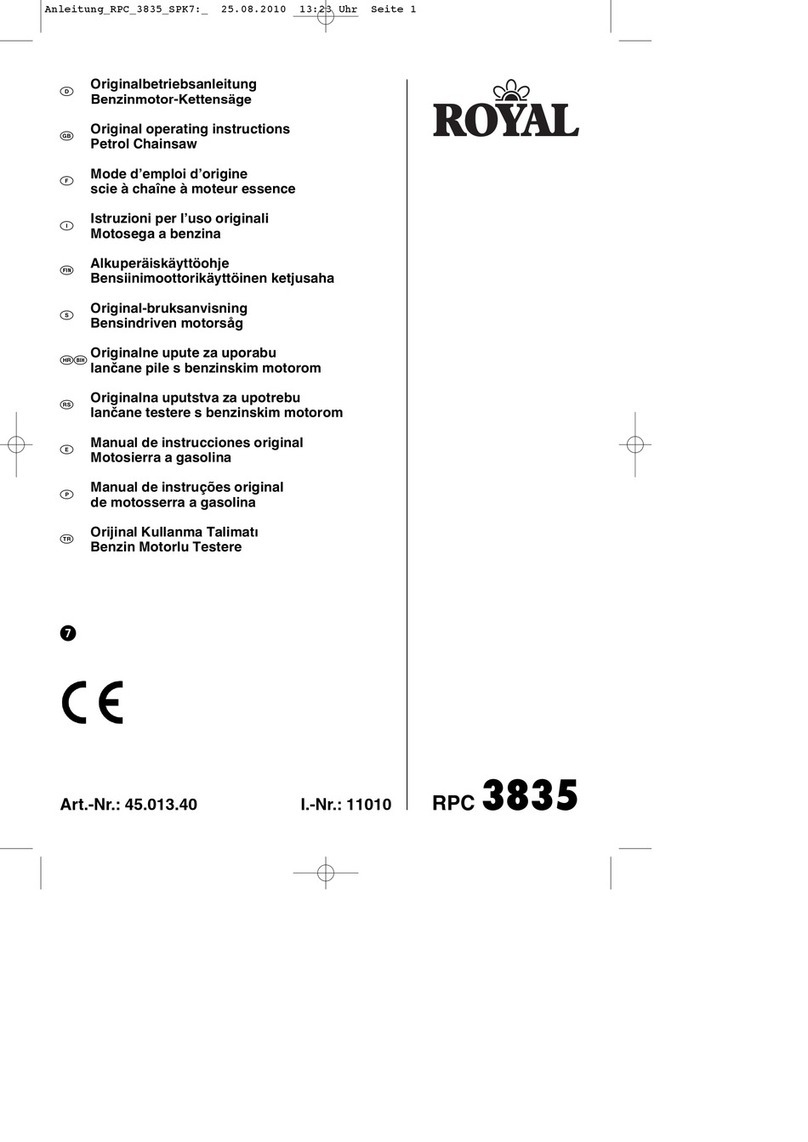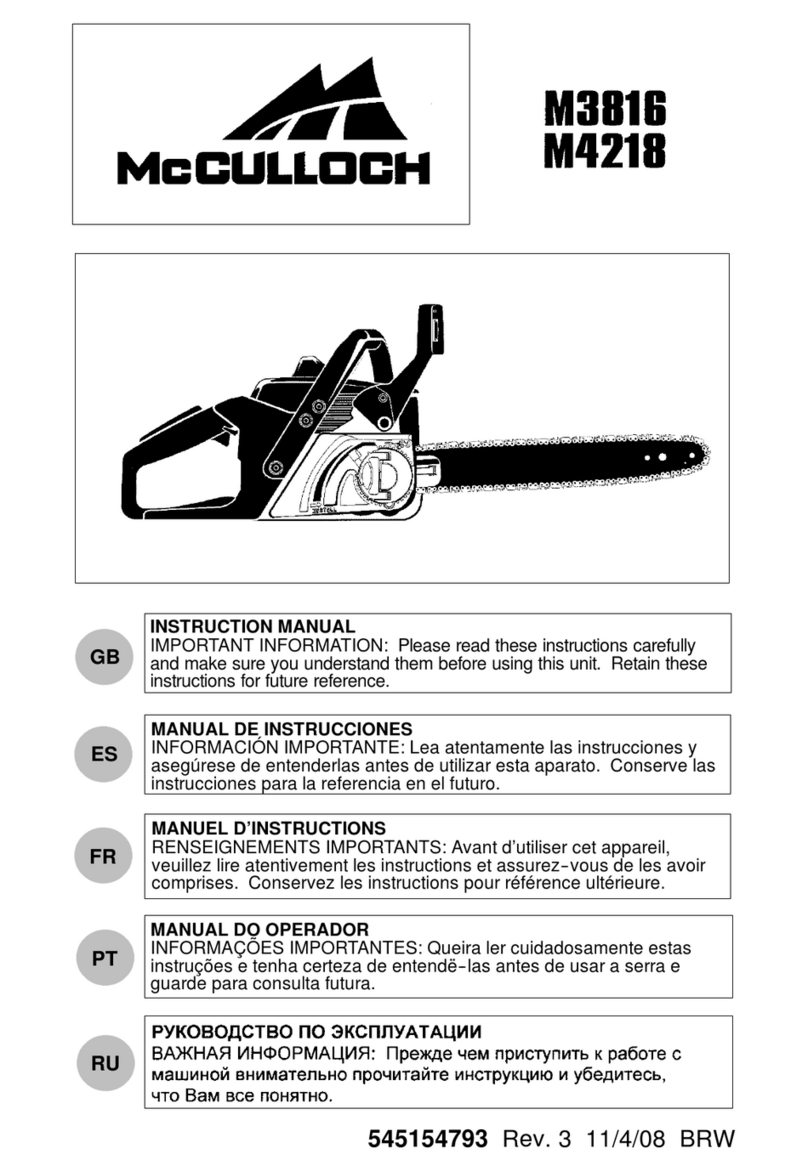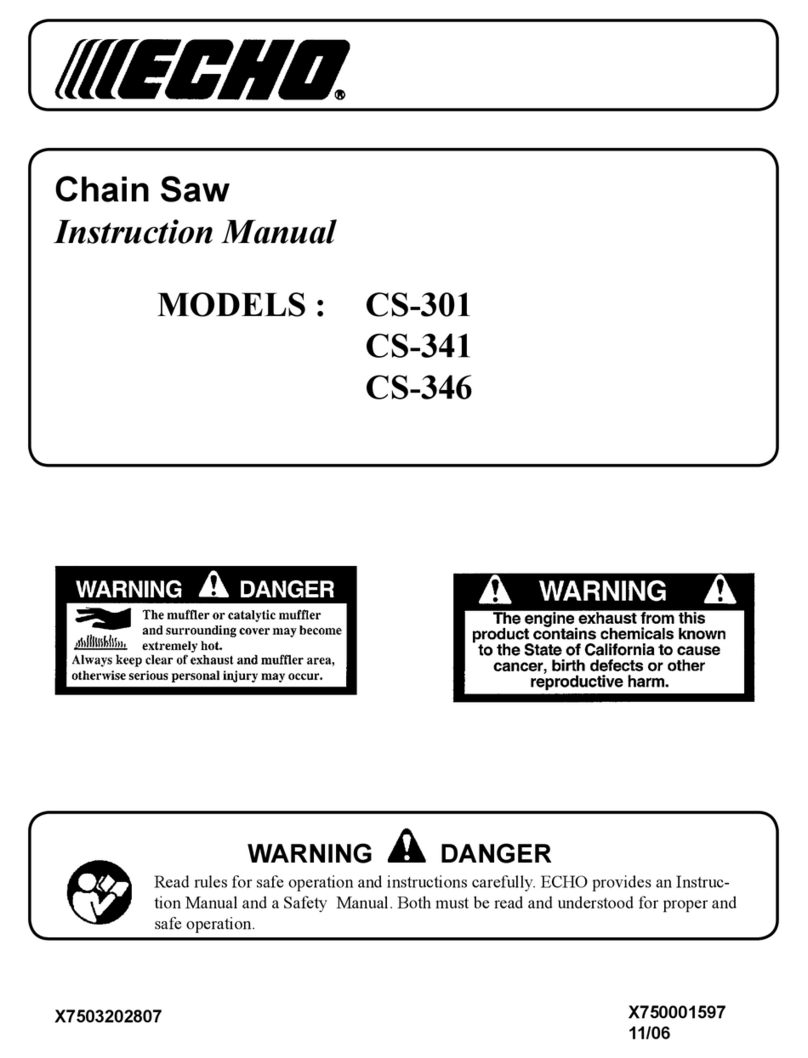
8
When you pull the startergrip, don'twrap the rewind starter
around your hands. Do not allow the grip to snap back, but
guide the starter rope slowly back to permit the rope to
rewind properly. Failure to follow this procedure may result
in
injury to hand or fingers and may damage the starter
mechanism.
Working Conditions
Operate your chain saw only outdoors in aventilated area.
Operate the saw under good visibility and daylight condi-
tions only.
Warnlngl
Take extreme care
in
wet and freezing weather
(rain, snow, ice). Put off the work when the weather
is
windy, stormy or rainfall is heavy. Clear the area where
you are working.
ami gl Avoid stumbling on obstacles such as stumps,
roots or rocks and watch out for holes or ditches. Be
extremely cautious when working on slopes or uneven
ground. There is increased danger of slipping on freshly
debarked logs.
Cutting Instructions
Grip: Always hold the saw firmly with both hands when
the engine
is
running. Place your left hand
on
front handle
bar and your right hand
on
rear handle and throttle trigger.
Left-handers should follow this instruction too.
Wrap your fingers tightly around the handles, keeping the
handles cradled between your thumb and forefinger (ill.
8).
With your hands
in
this position, you can best oppose and
absorb the push, pull and kickback forces of your saw
without having itslip out ofyourgrip (see section of reactive
forces). Make sure your chain saw handles and grip are in
good condition and free of moisture, pitch, oil or grease.
8
Wa
"9' Never use the saw with one hand.
You
cannot
control reactive forces (see pages
10
to
13)
and may lose
control of the
saw.
Important adjustments
Wa
rnlngIAt correct idle speed, chain should not turn.
For directions to adjust idle speed, see the appropriate
section of this Owner's Manual.
Do not use asaw with incorrect idle speed adjustment.
Adjust the idlespeedyour-selfaccordingto the appropriate
section of this maflual.
Have your STIHL Dealer check your saw and make proper
adjustments or repairs.
After adjusting achain start the saw, let theengine run for a
while, then switch engine off and recheck chain tension.
Proper chain tension is very important at all times.
Warning1Never touch arotating chain with your hand or
any part of your body.

